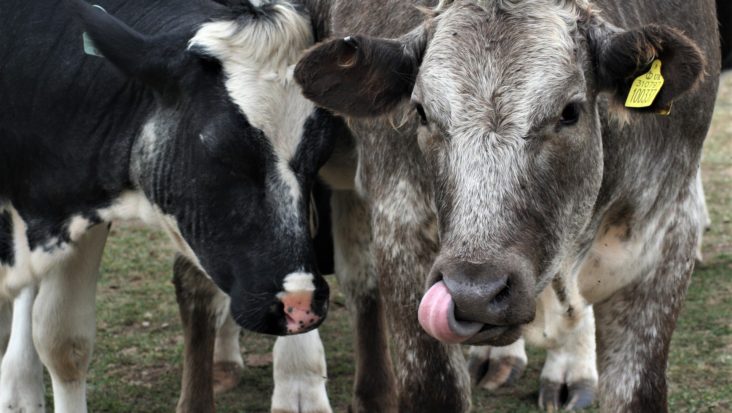Many become vegan for ethical reasons, connecting animal sentience with the billions of animals slaughtered for human meals. While we are more aware of the environmental devastation wrought by intensive animal agriculture, few of us know about another tragedy related to animal agriculture: the widespread killing of animals who threaten ranchers’ livestock. A federal government program called Wildlife Services is killing millions of wild animals every year for this reason.
What is Wildlife Services?
Wildlife Services is a program of the United States Department of Agriculture. It is mandated to perform a wide variety of work, including reducing rabies, controlling or killing birds near airports, and monitoring wildlife diseases. Wildlife Services carries out these programs nationwide.
How Wildlife Services Works in Conjunction with Agricultural Interests to Kill Wildlife
When livestock on the open range — predominantly cattle and sheep — are killed by a wild predator, ranchers may contact Wildlife Services to protect their animal agriculture interests. Ranchers see predators as a direct threat to their livelihood and many have frankly stated that their animals graze and give birth on the open range because getting adequate hay and other resources into a protected area would impact their bottom line. Wildlife Services has broad discretion to determine how a ranched animal was killed and may then find and kill the predator(s) believed responsible.
Wildlife Services uses a variety of methods to remove (kill) the predator(s) including poisoning, trapping and aerial gunning, where animals are shot from the air as a helicopter or small plane gives chase. This was the fate of a wolf family in Oregon as recently as March 2016 due to what was characterized as their “chronic livestock depredation.”[1] The patriarch, OR 4, was well known to wildlife biologists and nature lovers. Radio collared for many of his 10 years, OR 4 was considered old for a wild wolf and his many offspring are believed to be a large part of a strong wolf recovery in Oregon. His mate, who was also shot, was known as Limpy, due to a poorly healed leg injury; she may have been pregnant.
Ranchers put their animals in a very vulnerable position by letting them give birth and live on open rangeland which is habitat for wild predators such as wolves, coyote, bears, big cats, and birds of prey. Predators are attracted to prey animals in or near their territory. Is it right for us to subsidize the killing of wild species in order to protect animals that are going to be eventually rounded up, slaughtered, and eaten by humans? I invite you to ask why ranchers are passing on to taxpayers the costs of fully protecting their animals.
But That’s Not All…
There are a host of other issues with Wildlife Services’ involvement in human/wildlife/livestock issues, including the veracity of ranchers’ claims that their livestock was killed by a predator; the ethical considerations around the use of poison, traps, bait, and aerial gunning; the fact that pets are killed by these lethal controls; reported use of long-banned poisons to kill animals; biologists’ significant concerns about removing wild animals from the ecosystem and killing millions of birds that are attracted to the grain stored at large farms and feedlot operations to feed animals destined for slaughter and human consumption. Wildlife Services has explored non-lethal methods to reduce the number of animals that they kill, but they have failed to broadly implement them. We should ask why Wildlife Services hasn’t yet switched to more non-lethal controls: is it because they are infeasible, or do we need a shift in ranching and agency culture?
What Can We Do?
Effective advocacy requires us to research and remain aware of the practices of Wildlife Services. Oregon Representative Peter DeFazio has called for both an inquiry into and a budget reduction for Wildlife Services, a move that was blocked by the agricultural lobby. Help maintain pressure to improve Wildlife Services through personal education and support of groups working to monitor and end harmful practices such as Predator Defense, Center for Biological Diversity and Wild Earth Guardians.
Final Thoughts
While lack of awareness around these issues may make them seem relatively small or remote, I leave you with these astonishing numbers representing a small portion of the 2.7 million lives lost in a single year (FY 2014) due to Wildlife Services’ protection of agricultural interests.
| Species | Total Killed in FY 2014 | Species | Total Killed in FY 2014 | |
| Black tailed prairie dogs | 15,698 | Coyotes | 61,638 | |
| Starlings | 1,140,309 | Grey Wolves | 321 | |
| Cougars | 301 | Red winged blackbirds | 321,446 | |
| Common Grackles | 99,382
|
Black bears | 570 | |
| Red foxes | 1,125 | Bobcats | 784 |
Source: Wildlife Services “Animals Taken by Wildlife Services – FY 2014”
For further information, here are a few links on this important and little-known issue:
Harpers, March 2016
National Geographic, February 2016
High Country News, January 2016 (especially interesting information about non-lethal research)
Washington Post, June 2014
NPR, April 2014
Sacramento Bee’s 2012 three part series can be found here, here and here.
Recommended by Dr. Jane Goodall, Exposed is a short documentary produced by Predator Defense.
 Jennifer Gannett, VLCE is a faculty member at Main Street Vegan Academy, a graduate of Lewis & Clark Law School, a cat socializer, dog lover, and busy mom, who works formally and informally to make the world a better place.
Jennifer Gannett, VLCE is a faculty member at Main Street Vegan Academy, a graduate of Lewis & Clark Law School, a cat socializer, dog lover, and busy mom, who works formally and informally to make the world a better place.[1] In this case, the actual aerial gunning was performed by the state, not federal, agency.

